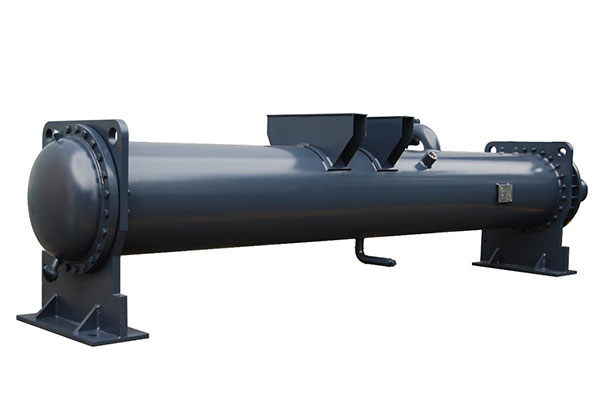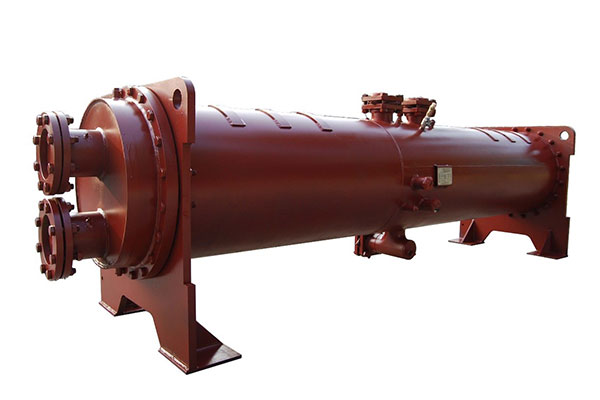Air suspension chillers are crucial in many industrial and commercial applications, and the flooded-type heat exchanger is one of the most important components of these systems. Understanding the requirements of the heat exchanger is essential to ensuring the air suspension units operate efficiently and remain stable.
A flooded-type heat exchanger works by transferring heat between two fluids with different temperatures. In air suspension chillers, it helps regulate temperature, optimize energy use, and improve overall performance. For instance, it can transfer heat from high-temperature gases to low-temperature liquids, or vice versa.
1. Material Requirements
1.1 Corrosion Resistance
In many industrial environments, fluids can be corrosive. For example, they may come into contact with acidic or alkaline substances. To withstand these conditions, the heat exchanger’s tubes and casing need to be made from corrosion-resistant materials, such as stainless steel. Stainless steel provides excellent corrosion resistance, allowing the heat exchanger to work reliably in complex chemical environments over long periods.1.2 Thermal Conductivity
To ensure efficient heat transfer, the materials used must have good thermal conductivity. Copper is a commonly used material due to its excellent heat conduction properties. By using copper heat exchange tubes, the rate of heat transfer between fluids is accelerated, increasing the overall efficiency of the heat exchanger.2. Structural Design Requirements
2.1 Sealing Performance
A flooded-type heat exchanger must maintain proper sealing to prevent leaks. If any leakage occurs, it can mix the two fluids, reducing heat transfer efficiency and potentially damaging other components of the air suspension unit. The sealing structure should incorporate high-quality materials, such as temperature- and pressure-resistant rubber gaskets, and the sealing must be secured using appropriate fastening methods.2.2 Fluid Passage Design
The design of the internal fluid passages is crucial. For the flooded type heat exchanger, it is important that the liquid flows evenly across the heat exchange surfaces. Factors such as passage diameter and surface roughness directly affect fluid dynamics. A smaller diameter increases resistance, while a rough surface may cause localized turbulence, both of which reduce heat transfer efficiency.3. Operational Parameter Requirements
3.1 Flow Rate
The flow rate of the two fluids (such as gas and liquid) must be controlled within the proper range. If the liquid flow rate is too high, the pressure inside the heat exchanger may become excessive, leading to potential damage. If the flow rate is too low, the heat transfer surface will not be fully utilized, reducing efficiency. The optimal flow rate should be based on the chiller’s rated power and operating temperature.3.2 Temperature and Pressure Tolerance
The flooded type heat exchanger must be able to withstand the temperature and pressure ranges encountered by the air suspension chiller. These conditions can vary significantly in different applications. For instance, in high-temperature and high-pressure industrial processes, the heat exchanger’s material and design need to endure extreme temperatures (up to several hundred degrees Celsius) and pressures (tens of megapascals).4. Maintenance Requirements
4.1 Regular Cleaning
Over time, impurities in the fluids can accumulate inside the heat exchanger, reducing efficiency. Regular cleaning is essential to maintain peak performance. Depending on the situation, cleaning methods can include chemical cleaning with specialized agents to remove dirt and scale or physical cleaning methods, such as using high-pressure water jets.4.2 Inspection and Repair
Routine inspections should be carried out to check the sealing performance, heat exchange efficiency, and overall condition of the heat exchanger. If damaged components are found, such as aged seals or cracked heat exchange tubes, they should be promptly repaired or replaced to ensure continued optimal operation.Conclusion
The flooded type heat exchanger in air suspension chillers has a range of specific requirements, from material choice and structural design to operational parameters and maintenance. Carefully considering these factors ensures the air suspension unit operates efficiently, with stability and reliability, supporting long-term industrial cooling processes.

评论
发表评论